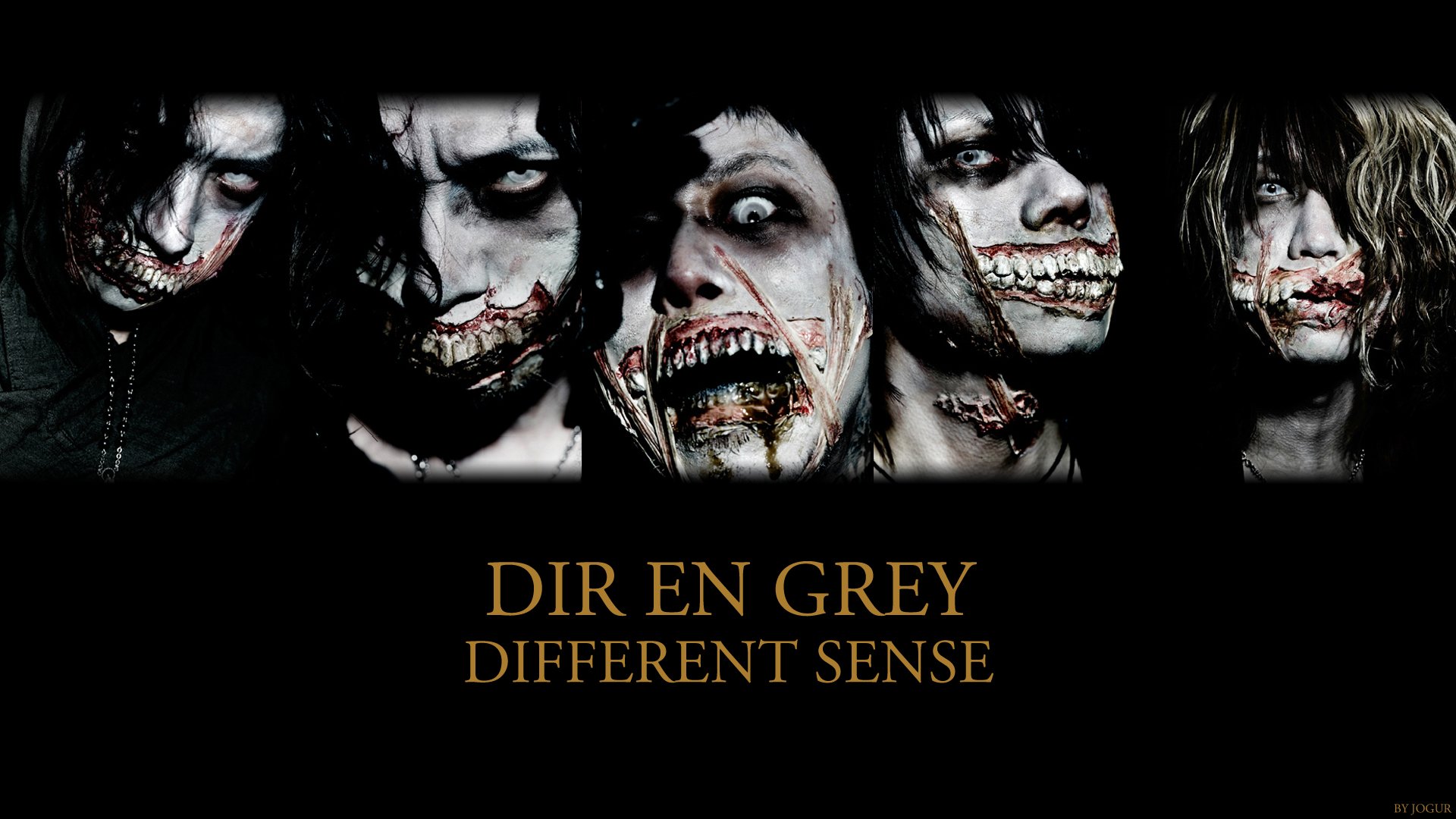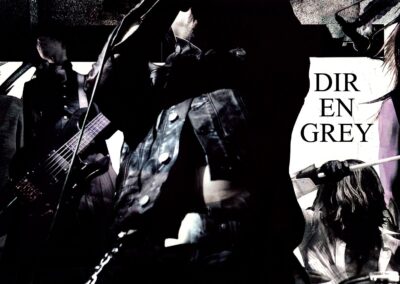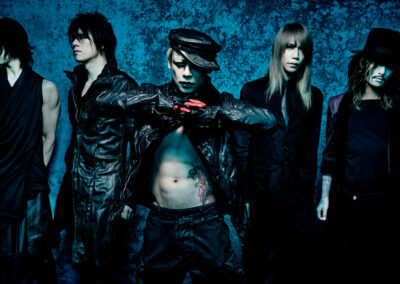Discussing DIR EN GREY’s dark and daring magnum opus, Dum Spiro Spero with Die and Shinya.
DIR EN GREY, the Japanese mastodon known for their boundary-pushing sound and intense performances, delivered a true masterpiece with their 2011 album Dum Spiro Spero following their previous masterpiece Uroboros. This album stands as a testament to the band’s artistic evolution and their willingness to explore new sonic territories. Dum Spiro Spero is a daring and breathtaking album that showcases DIR EN GREY at the height of their creative powers. With its dark and atmospheric soundscapes, intricate instrumentation, and introspective lyrics, the album is a testament to the band’s artistic vision and their ability to push the boundaries of rock music. Dum Spiro Spero is a must-listen for fans of alternative and experimental rock, and a testament to DIR EN GREY’s status as one of Japan’s most innovative and influential bands. Before their show at Le Bataclan, we met with guitarist Die and drummer Shinya to discuss the album.
—— Dum Spiro Spero has just been released. Can you tell us how long it took you to write and record the album?
Die: It took us quite a long time, over a year. The process began after our Budokan show in Japan in January 2010. However, during that period, we were also touring Japan, so we didn’t have a strict schedule. We were constantly working and creating, although not necessarily recording the entire time. We believe in taking our time and not rushing the creative process. Each song can take anywhere from a month to a year to be completed. We actually finished the album just a couple of months ago.
—— The title of the album, Dum Spiro Spero, is a Latin proverb meaning “While I breathe, I hope” . Was it influenced by the events that occurred in Japan on March 11, 2011?
Shinya: We decided on the title after the events in Japan, so it’s possible that we were mentally influenced by it. However, we don’t want to impose a specific meaning on people. Interpret it as you wish, as your interpretation is just as valid as ours.
—— There is always something new musically and vocally on each album. Is this intentional or does it come naturally?
Die: It’s a combination of both. It comes naturally to us to always strive for something new, to improve ourselves and avoid getting bored. However, we don’t try to be something we’re not. We simply do our best to express musically what is in our hearts, what we want to convey at that particular moment in time. We weren’t overly concerned with the idea of change. Ideas come to us as they do. What we truly focused on was the quality of the sound. From there, we expanded our horizons and tried to incorporate those elements into the foundation of our music. Our process has always been about grasping various things and translating what we sense into sound, and that comes naturally to us.
—— Dum Spiro Spero is known for its density and diversity. It feels like a natural yet darker continuation of Uroboros. How would you describe it compared to your previous work?
Shinya: After Uroboros, we took some time to recover and prepare ourselves to create something even more special and unique. On this new album, the songs are stronger and delve deeper than our previous work. I believe Dum Spiro Spero surpasses Uroboros in many ways.
Die: I completely agree with you, Mandah. It is indeed more diverse and gloomier. All the songs were created using seven-string guitars, which gives the album a heavier and darker sound. There are more harmonies and solos, adding vibrant colors to the guitar parts. Dum Spiro Spero is perhaps more guitar-oriented than Uroboros and definitely expands our musical horizons
—— The album opens with Kyoukotsu no Nari, a spine-chilling instrumental track. The intros of your albums always provide an accurate insight into the sound and atmosphere of the whole album. Do you write the intro of the album prior to the other songs to guide you, or do you write it once every song is done?
Die: That’s an interesting question. We didn’t have a specific vision for the album as a whole when we started. We focused on creating one song at a time and eventually ended up with a complete image. Kyoukotsu no Nari was actually made during the later part of the recording process. We also created The Blossoming Beelzebub, the first song of the album, around the same time to ensure a logical and coherent combination. In fact, we made some adjustments to the arrangements of The Blossoming Beelzebub afterwards to make it more fitting with Kyoukotsu no Nari. While we don’t have a particular agenda for writing the opening songs, it’s true that these songs hold a special significance for us and we focus on them.
—— The bonus track “Rasetsukoku” is a re-recording of the original song from your 2000 album Macabre. This is something you’ve done in the past with songs like Hydra and Zan. How do you choose which songs to re-record and why?
Shinya: This time, we decided to re-record “Rasetsukoku” because we know it’s a very important song for our live performances, not only in Japan but also overseas. The fans go wild when we play it, so we really wanted to refresh it and have a new version to play on tour. It was a way to give both the fans and the band a fresh experience with the song.
—— What has been the biggest challenge in the recording of the new album?
Die: The most challenging part of the album-making process was probably the mixing, done by Tue Madsen, and the mastering process, done by Alan Douches. For the mastering, we wanted our sound to be as perfect as possible, exactly how we envisioned it. However, since we worked with a Western engineer, it was difficult to discuss and communicate our ideas solely through the internet. This is something that is better done in person. It was complicated to exchange ideas, piece everything together, and ensure that we achieved the sound we wanted. The mastering process was definitely the most challenging step in the recording.
—— The album cover appears to depict Tarani Bosatsu (Tara), the Mother of Liberation in Tibetan Buddhism. Can you tell us more about it?
Shinya: Wow! The album cover is not specifically based on religion. For Dum Spiro Spero, we wanted a spiritual symbol that everyone can relate to, something that can speak to everyone on a deeper level. We also wanted something different from our previous artworks. Yoda Koji designed it, and we have been working with him for years.
—— The artwork and title of Dum Spiro Spero refer to hope and life, while the content of the music and lyrics evoke quite the opposite. Was this intentional?
Die: This contradiction was not intentionally planned. Hope is definitely a keyword for the album, especially for the artwork. We discussed it extensively. The bamboo scenery holds great meaning. Bamboo represents sacredness and serenity, yet on the album cover, the bamboo wood appears dark and invasive. The light emanating from the enlightenment-being (Tarani Bosatsu) symbolizes spirituality and life. Ultimately, it signifies the importance of maintaining faith and hope even in the face of adversity. “While I breathe, I hope.” We have had many discussions about it, such as how the light shines on the bamboo, and so on. As for the content of the album, it follows a similar theme. As you mentioned, the music is dark and heavy, but the melodies bring illumination to the overall sound. If it makes you question and contemplate, that’s great. Do we have hope or not? It holds significant meaning.
—— I get it, interesting.
The Lotus also conveys the values and ideas you described.
Die: Exactly.
—— In your opinion, what is the greatest strength of DIR EN GREY (compared to other bands)?
Die: Hmm, that’s a tough question because we don’t really compare ourselves to other bands (laughs). But personally, I believe our greatest strength is having the courage to do what others may be afraid to do. Musically, we go beyond established formats and boundaries. Our visuals and videos are meticulous, outrageous, and even grotesque. The overall identity of the band is truly unique. We constantly motivate and inspire each other, always striving to grow and develop together. Each member brings something individual to the band, and that is definitely a strength. Additionally, while many bands try to be friendly and please everyone, that’s not our approach. We’re not here to please anyone, and we have the courage to do what we want on every level.
—— Thank you for the interview.
Die: Thank you very much. This was an interesting interview.
__________________
Mandah FRÉNOT
(c) VMJ




